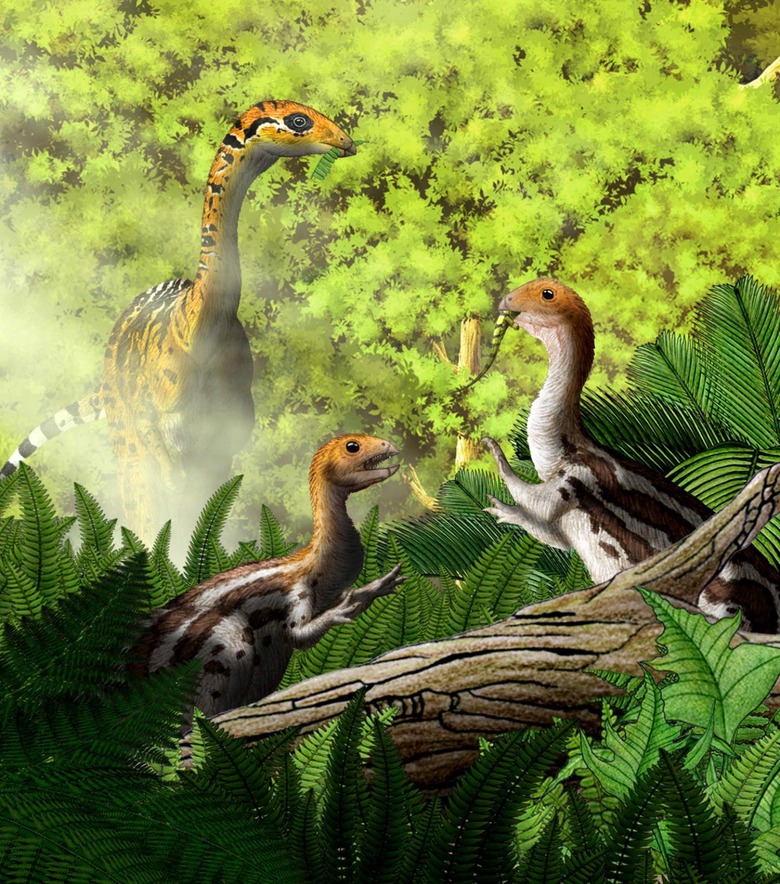This Odd Dinosaur Changed Drastically As It Aged
In the Gobi desert a new sort of dinosaur has been discovered which changed drastically from birth to age six. Using a total of 19 sets of bones, paleontologists show how Limusaurus inextricabilis ("mire lizard who could not escape") changed in big ways in the first year of its life. Researchers have shown how baby versions of this dinosaur had teeth, but that these teeth left the dinosaur within a year. But what about reptiles in our modern age that lose and grow several sets of teeth? This research has an answer for that, and other oddities, too.
For the first several hundred years of paleontology in the modern world, most different sets of bones were named different dinosaurs. Paleontologist Jack Horner covers this oddity in the TED Talk "Where are the baby dinosaurs?" recorded in November of 2011. Iconoclastic thinking, it's called, busting up the old way of thinking about which dinosaurs had which skulls – dinosaur skulls get bigger as they age. You'll see this TED Talk below this paragraph – then more chat about the paper published (separately) after the video embed.
Limusaurus inextricabilis was a Jurassic-age ceratosaurian theropod. They show six ontogenetic stages based on body size and histological data. They also show a whopping 78 ontogenetic changes in the dinosaur over the course of its life. The strangest of these, according to the researchers that've published this paper, is the change in the mouth.
ABOVE and BELOW: Conceptual image illustrated by Yu Chen. This image shows two young Limusaurus inextricabilis and one elder – you'll see the teeth gone there.

When the baby is hatched from an egg, a full set of teeth and strong jaw are ready to roll to eat meat. By the time the dinosaur is around a year old, it's using a toothless beak to chomp and grind plant matter. Once the first (and only) set of teeth were shed, replacement teeth never formed, and tooth sockets closed over entirely.
Of the collection of bones found in the Gobi desert, the youngest were infants and the oldest was 10 years of age. Most maturations other than the teeth had taken place by the time the animal was 6-months old. It's important to note that the "beaks" these dinosaurs had when they'd lost their teeth weren't the same as a bird's beak.
Instead, it is as if these dinosaurs had teeth whilst in their first 6 months of life, lost their teeth, and used the bone left over to continue eating. From that point on, gastroliths started to appear in the guts of these dinosaurs. Gastroliths as in the same sorts of hard material found in modern birds to help digestion for a lack of grinding teeth.
While these dinosaurs didn't exactly turn into birds by the time they'd become mature adults, it certainly lends credence to the theory that dinosaurs eventually evolved into birds. We've got dinosaurs here in the United States today, as Jack Horner reminds us – they're chickens!
For more information on Limusaurus inextricabilis, see the paper "Extreme Ontogenetic Changes in a Ceratosaurian Theropod" as it appears in the scientific publication Current Biology. This paper was written by Shuo Wang, Josef Stiegler, Romain Amiot, Xu Wang, Guo-hao Du, James M. Clark, and Xing Xu. This paper can be found with publishing code DOI: http://dx.doi.org/10.1016/j.cub.2016.10.043 starting this week.
